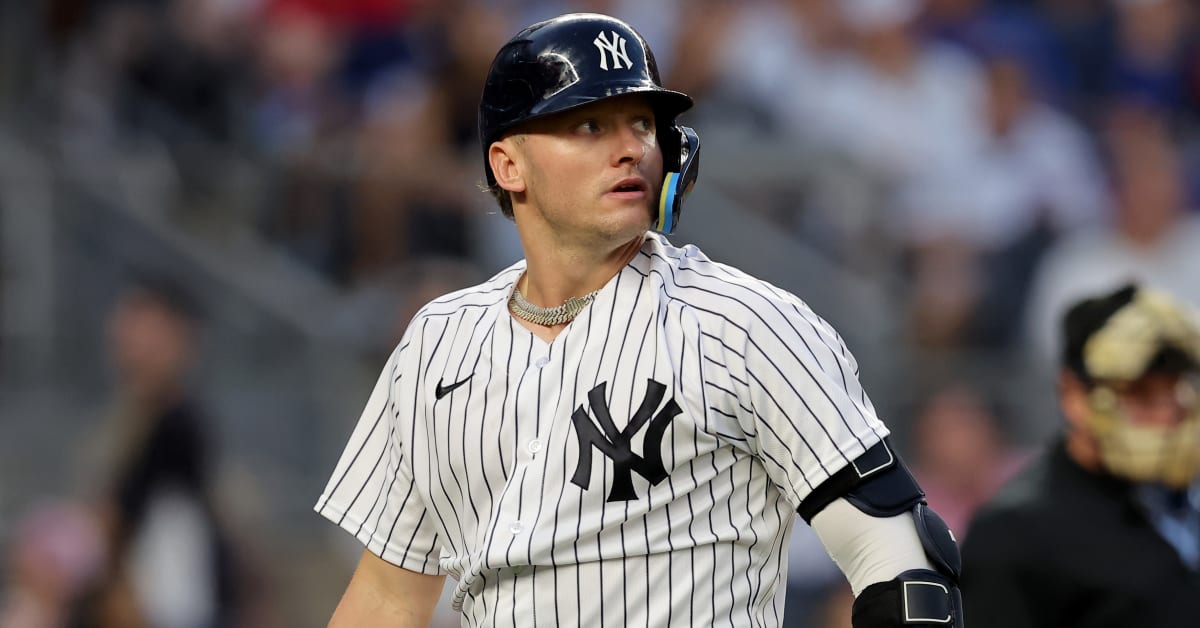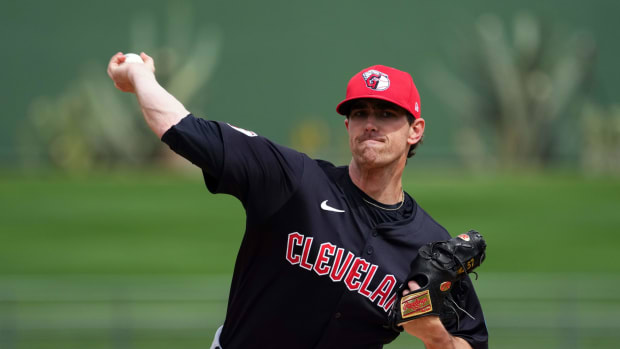Searching for Solace in Josh Donaldson’s Historically Unlucky Season
The news that Yankees third baseman Josh Donaldson was headed to the 10-day injured list with a calf strain last weekend felt almost merciful.
Such has been the nature of Donaldson’s season—a dreadful few months, interrupted in the spring by a hamstring injury, making for easily the worst stretch of his career. The numbers speak for themselves. The veteran is hitting .142. (The Mendoza Line is but a hazy glimmer on the horizon.) While he’s shown his typical power—10 home runs in 34 games—he’s offered almost nothing else. The recovery timetable for his current injury is uncertain, and Donaldson told reporters Monday that his season may be over. Simply put, it’s been a maddening, terrible year for him.
It’s also been historically unlucky.
The most straightforward way to show this is his BABIP—a near-impossibly low .076. This is batting average on balls in play, or the percentage of balls that become hits out of those a hitter puts in play, with a league average of .297. (The MLB-wide figure tends to stay in the same general range from year to year—this year, it’s gotten a slight boost from banning the shift, which has bumped the statistic upwards across the game.) All of which is to say: A .076 BABIP is tremendously unlucky.
Of course, “luck” is a fraught concept in baseball, and BABIP is a brute-force metric by which to assess it. As a hitter, there are ways to create your own luck, with players who consistently outperform or underperform the average here, whether because of speed or approach or some other factor. Not every player will put the ball in play the same way. These are important caveats. But they’re generally used to explain away differences of a few dozen points—a place where a player differs from the average just enough for it to be noticeable. For a gap of 200-plus points? That seems to be something else.
This is a different category of profoundly weird, statistically unlikely bad luck.

If Josh Donaldson’s season is indeed over, he’ll finish with just four singles, a double and 10 home runs in 106 at bats.
Brad Penner/USA Today Sports
It’s not that Donaldson has stopped hitting the ball hard. (Again: 10 home runs in 34 games!) His hard-hit rate of 51% is better than his career average. He’s hitting more groundballs than usual, but not by a significant margin, and not as many as he hit in, say, 2018 or 2020, two seasons in which he was still well above average as a hitter. He isn’t hitting any more pop-ups. Look at his expected batting average, which pulls in exit velocity and launch angle to determine what a player’s average “should'' be. Donaldson’s expected average of .217 is a few points higher than what it was last season at .215. But his actual batting average is 80 points lower.
It’s not that there’s anything to suggest he should be having a particularly good year. Before the calf injury, Donaldson was clearly struggling, and that would have been true even if there wasn’t such a gap between his expected and actual production. There’s more here than just a curiously low BABIP. But this seems like an interesting case of bad luck making bad performance far, far worse.
So: Has anyone had a season like this? With, say, at least 100 plate appearances and a BABIP below .080?
Just one player. He was an Irish immigrant named Charlie McCullough, and he played one season in the American Association in 1890, splitting the year between the Brooklyn Gladiators and Syracuse Stars. He was a pitcher who went 5–23 with a 4.88 ERA and did not ever play any kind of professional baseball again.
And in that one season of organized baseball, while struggling to pitch and struggling even harder to hit, McCullough became the only player to finish a season at the plate with a BABIP worse than Donaldson’s. (Also, eight years later, at the age of 32, he died. McCullough was seemingly a tremendously unlucky man.)
This is the kind of fact that might as well speak for itself. The numbers feel extraneous when your only point of comparison is Charlie McCullough of the 1890 Syracuse Stars. (Though, for what it’s worth, McCullough finished with a .032 batting average and a .121 OPS: Donaldson looks princely by comparison.) But it’s unfair to judge whole seasons against a partial one like Donaldson’s. Even if he doesn’t play any further this year—of course no one in the modern era has put up a full season like this. It stands to reason that a sub-.080 BABIP has to either get better or get a player out of the lineup.
So let’s break it down a bit more. We can isolate Donaldson’s month of June, in which his BABIP was actually worse than his seasonal figure, at .056, and look for anything comparable. Let’s call it any month with 60 plate appearances or more and a BABIP in the ballpark of .056. These will be our bad-luck months. And, yes, BABIP is more than luck, but at this end of the scale—this far off the league average for someone getting consistent playing time for a month!—you’re almost certainly looking at some extremely poor fortune.
First, let’s consider the context. There have been 23,019 players in the history of the major leagues, per Baseball-Reference, as of Tuesday. These many thousands of men have played in more than a century’s worth of seasons containing six months apiece. Think of all the bad-luck months you have seen from individual players—stretches where seemingly every ball finds a glove, where nothing falls, where there are no gaps to be found. Think of players who seemingly could do nothing to help themselves for weeks at a time. Think of how banal that feels. And think of how many thousands upon thousands of individual player months there have been in the history of the game. If baseball offers us anything, it offers endless opportunities to watch someone run into brutal, terrible luck.
And in all of that, there have been nine players ever to post a monthly BABIP below .065.
| Name | Month/Year | BABIP |
|---|---|---|
Dave Valle | May 1991 | .064 |
Josh Donaldson | June 2023 | .056 |
Howard Johnson | June 1995 | .056 |
Don Baylor | March/April 1981 | .055 |
Yasmani Grandal | September/October 2015 | .054 |
Malachi Kittridge | May 1905 | .052 |
Henry Aaron | March/April 1973 | .047 |
Joe Morgan | July 1983 | .047 |
Ted Kubiak | May 1971 | .027 |
What a list! It has four players who were former MVPs: Donaldson, Baylor, Aaron and Morgan. That feels both oddly reassuring (anyone can suffer from a brief stretch of terrible luck) and simply logical (a manager is far more likely to let a top player stick in the lineup through a month like this). The others were disproportionately catchers—Valle, Grandal, Kittridge—and therefore harder to replace in the lineup in their own way. As for the last two, Johnson was in the final season of his career, while Kubiak was traded at the deadline that year and saw his performance improve thereafter. But let’s examine one more dimension here. Let’s look at how these players performed in their terrible, no-good, bad-luck months:
| Player | Batting Average | On-Base Percentage | Slugging Percentage |
|---|---|---|---|
Valle | .070 | .221 | .123 |
Donaldson | .148 | .206 | .508 |
Johnson | .096 | .242 | .289 |
Baylor | .062 | .195 | .123 |
Grandal | .059 | .246 | .118 |
Kittridge | .049 | .108 | .082 |
Aaron | .125 | .300 | .411 |
Morgan | .060 | .299 | .160 |
Kubiak | .064 | .228 | .192 |
Donaldson had a terrible June. His poor performance was coupled with some of the worst luck ever seen in baseball. And you know what? He did more with it than anyone could have.




































